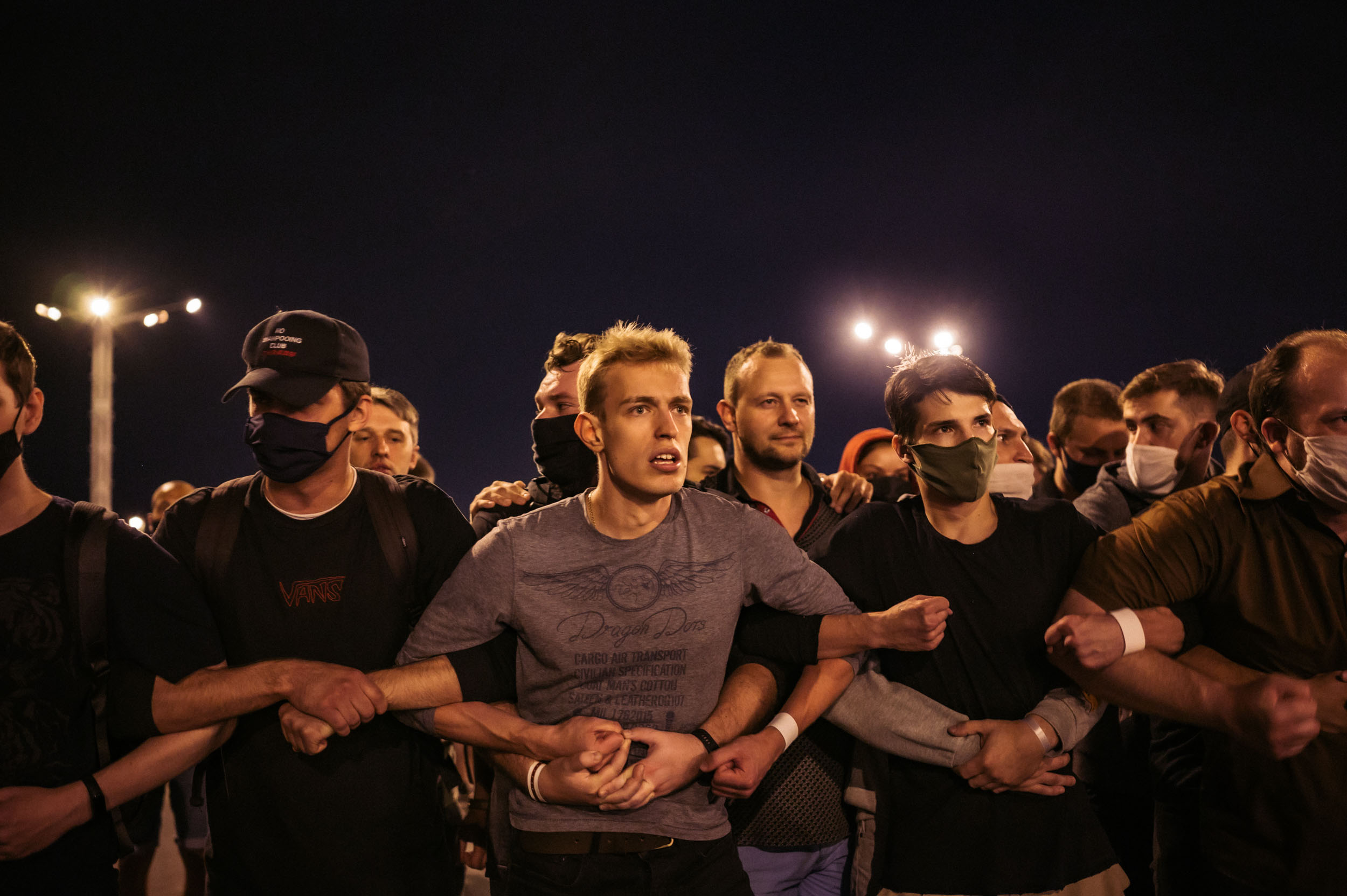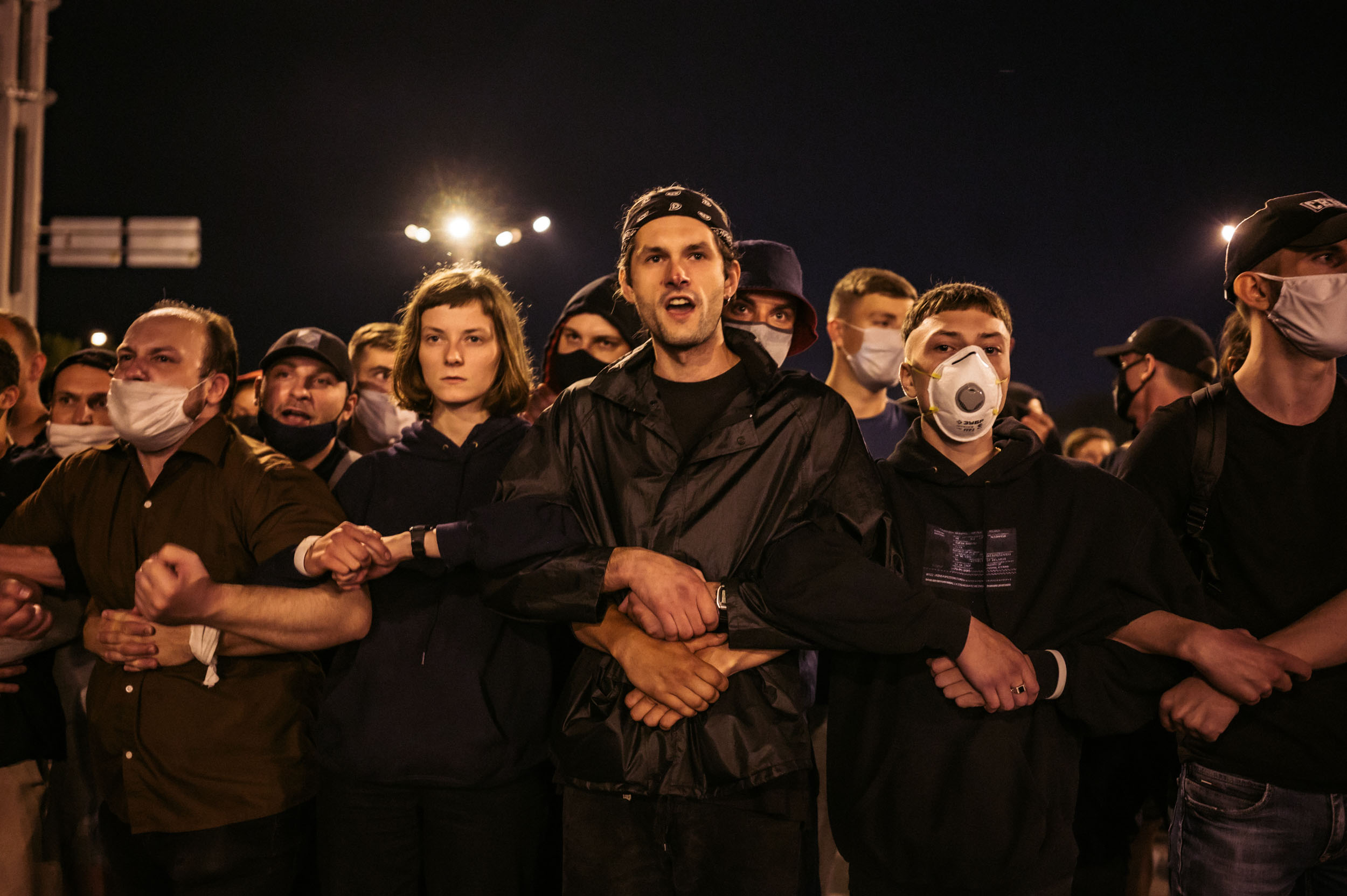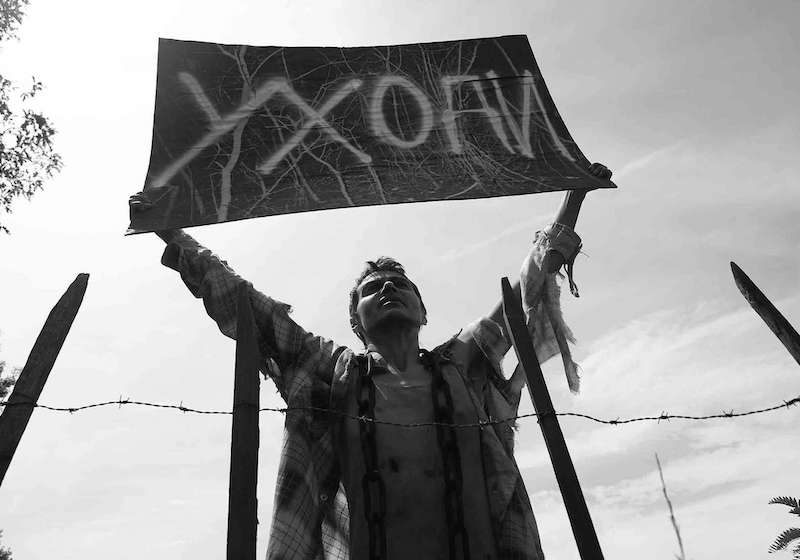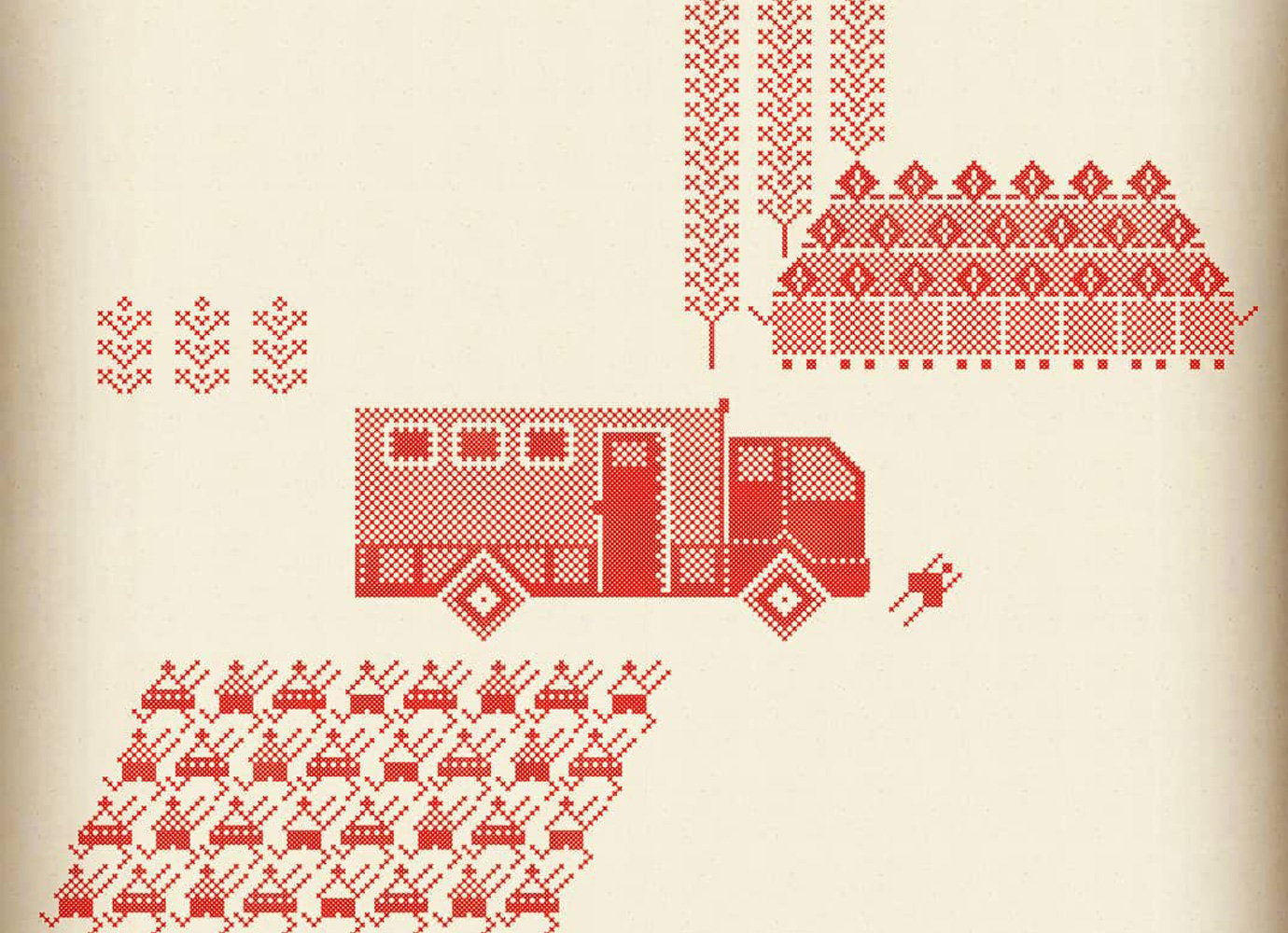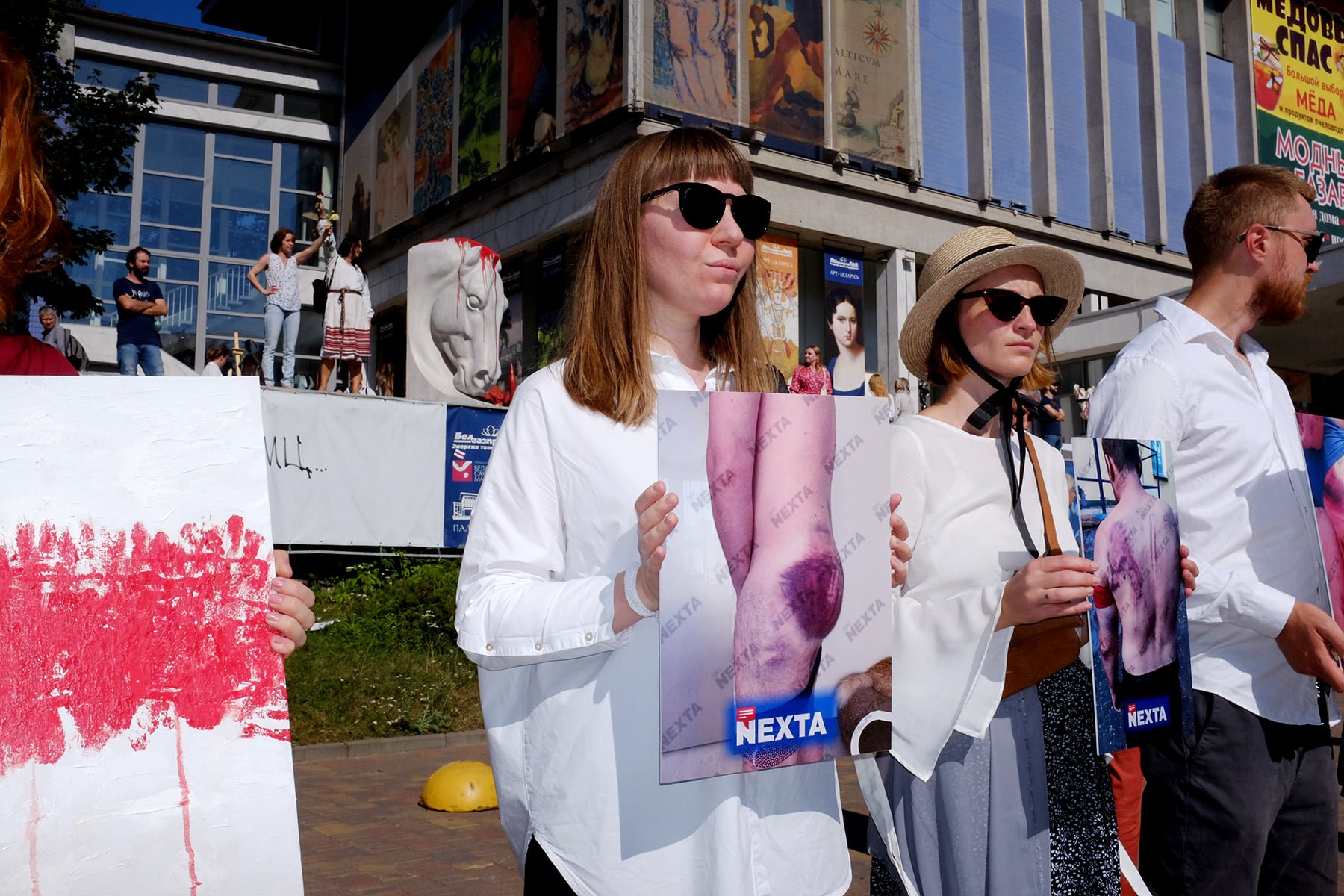Belarus protests: the election that shook the country — in photos
Batons, tear gas, stun grenades, rubber bullets: protesters in Belarus have faced more than a week of bloody clashes with riot police amid demonstrations against the country’s disputed election on 9 August. Photographer Denis Vejas arrived in Minsk one week before votes were cast. His photos show a timeline of events as they occurred — from peaceful rallies in the days running up to the election, to “solidarity chains” during the nights of unrest.
Early voting for Belarus’ presidential election started on 4 August. This photo was taken on 6 August, during an impromptu opposition rally in Kyiv Park. Rallies had been reserved for designated areas of Minsk and were only allowed with permission from the government. Before the elections, President Alexander Lukashenko occupied all of these spaces by organising random government events to prevent people from gathering. After being forced to cancel her campaign events, opposition leader Svetlana Tikhanovskaya announced that she would in fact attend one of the events as a visitor. Thousands gathered to support her in doing so. The white bracelet worn by attendees became a nationwide symbol of resistance.
The atmosphere is tense due to the risks of attending such an event. Kyiv Park is fenced off and surrounded by police and OMON, the police’s special forces division. Two DJs are arrested for playing Viktor Tsoi’s song Changes (Peremen!) from the 1987 film ASSA. This song, popular among demonstrators at the fall of communism, quickly became an anthem of resistance once more on the streets of Belarus. Over the following days, protesters arranged a flashmob to drive down Minsk’s Independence Avenue while playing the song as a show of solidarity.
Maria Kolesnikova is one of three Belarusian opposition leaders who have been pushing to oust longtime president Alexander Lukashenko. Here she’s pictured leaving the demonstration in Kiev park, and eventually taking people onto the streets of Minsk.
Belarusians await a green traffic light during a peaceful opposition rally. Participation in such a demonstration could result in up to 10 days in jail for the attendees. However, as one Belarusian friend noted: “Ten days in jail is better than another six years with the regime.”
9 August, the day of the Belarusian presidential election. A man is photographed holding up a slogan saying: “I am for fair elections”. That evening would be the first night of clashes over the disputed poll.
Svetlana Tikhanovskaya, the main challenger against Belarusian President Alexander Lukashenko, pictured a couple of hours before the election’s results are announced on 9 August.
In a matter of hours after the presidential results are announced, thousands of people fill the streets across Belarus demanding a fair recount of their votes. On 10 August, Svetlana Tikhanovskaya gives her first statement, calling the election rigged.
According to pre-election polls organised by independent media outlets, just three per cent of Belarusians actually supported Lukashenko in the election run-up. As soon as these numbers were announced, graffiti proclaiming “3 per cent” started to appear all over Minsk. Lukashenko’s government gave very different numbers, claiming that his approval ratings were closer to 79 per cent.
On 11 August, the internet was shut down all over the country. Protesters used the torches on their phones to make their location known to others. To quash demonstrations, police vans began hunting down small groups of people, day and night, to try and stop them from joining bigger gatherings. You could hear stun grenades and shooting coming from all the directions.
Protesters formed human chains so that police couldn’t single them out from the crowd. The violence of the police was unfathomable. In the first two days of clashes, 3,000 people were arrested, and as the prisons became full, the authorities resorted to beating the protesters and leaving them on the streets. Those who were detained experienced torture and humiliation. OMON vans patrolled the city, hunting smaller groups of people, beating them, or shooting them with rubber bullets.
Here, protesters are running from stun grenades. The crowds who approached regime forces were instantly met with violence.
A man stands in front of a line of OMON officers.
OMON officers would hide inside ambulances to get closer to groups of protesters. This was taken on 10 August, on the second night of protests, after which protesters learnt to avoid ambulance vehicles. Local car drivers became the “eyes” of protestors. They would share online where OMON forces were located, and create traffic jams to block militia convoys from approaching the protests.
Almost everyone in the country knows someone — whether it is a family member, a friend, or a distant relative — who has suffered from police brutality. With such violence exposed, the country is at a point of no return. There is a powerful feeling of unity among the protesters, and a strong will to stand till the end. As the fight goes on, Belarusians are proving how ordinary people can unite and rise against a system of power and oppression, shaking the apparatus of power from the ground up.
